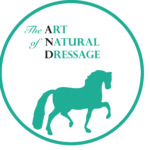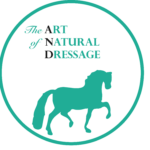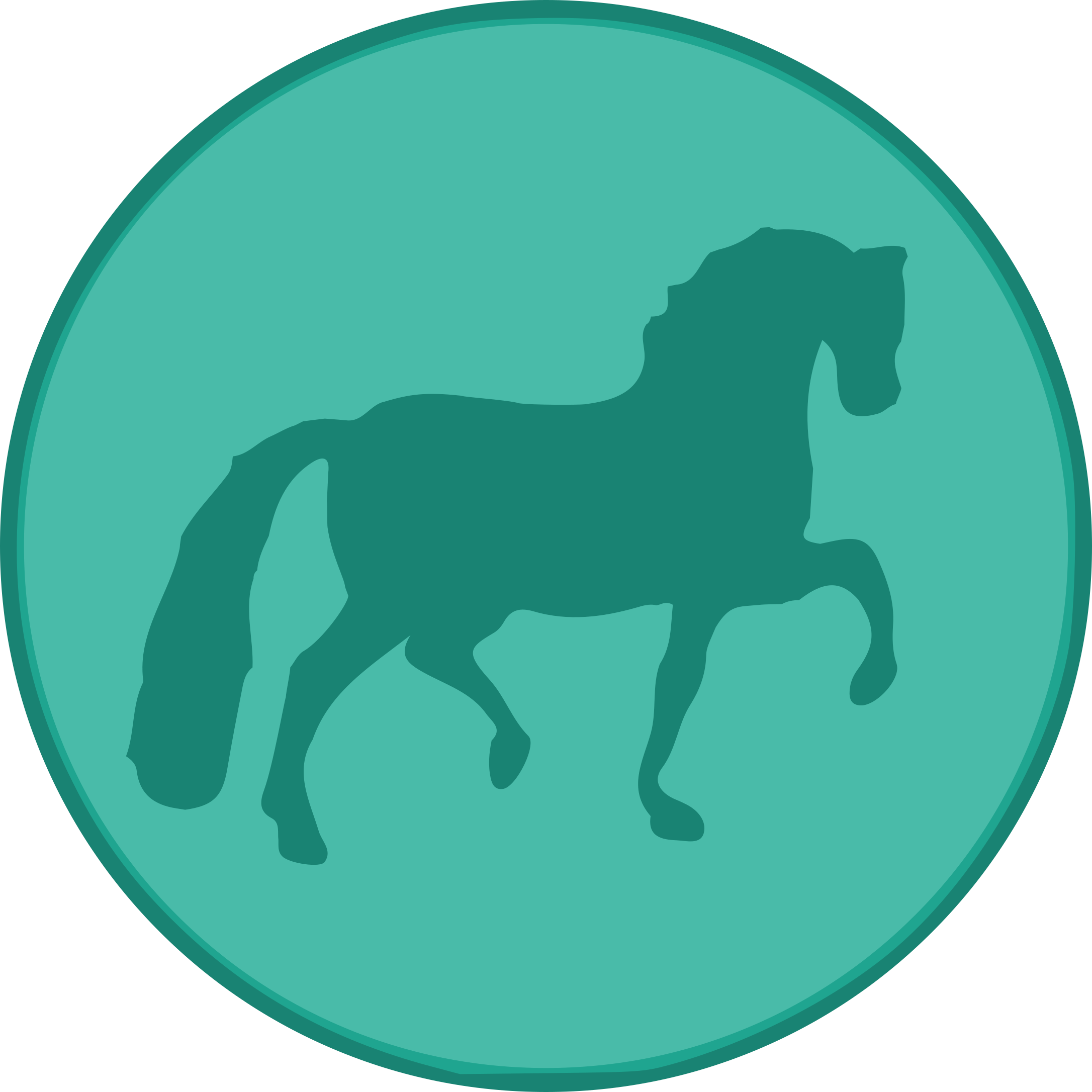Art Of Natural Dressage
These articles will be extended and provided with background info. Would you like to stay informed you can subscribe here:
- 1.1 A possible start – Just be with your horse
 Overview This document introduces the fundamental principle of the Art of Natural Dressage (AND): before asking anything from a horse,… Read more: 1.1 A possible start – Just be with your horse
Overview This document introduces the fundamental principle of the Art of Natural Dressage (AND): before asking anything from a horse,… Read more: 1.1 A possible start – Just be with your horse - 1.2 Introducing Food Rewards
 Teaching Yourself and Your Horse How to Use Food Rewards *Note: Food rewards are not a necessary part of training… Read more: 1.2 Introducing Food Rewards
Teaching Yourself and Your Horse How to Use Food Rewards *Note: Food rewards are not a necessary part of training… Read more: 1.2 Introducing Food Rewards - 1.3 Making Grass Your Friend
 Many horse owners struggle with their horses being overly focused on grass, making it difficult to maintain attention and interaction.… Read more: 1.3 Making Grass Your Friend
Many horse owners struggle with their horses being overly focused on grass, making it difficult to maintain attention and interaction.… Read more: 1.3 Making Grass Your Friend - 1.4 Playing: Role Play
 Overview This document explores the use of role-playing games as a way to interact with horses in a fun, engaging,… Read more: 1.4 Playing: Role Play
Overview This document explores the use of role-playing games as a way to interact with horses in a fun, engaging,… Read more: 1.4 Playing: Role Play - 1.5 Playing – Calm Games
 As high-energy play is not always suitable for every horse or situation, this discussion collects ideas for calm games—activities that… Read more: 1.5 Playing – Calm Games
As high-energy play is not always suitable for every horse or situation, this discussion collects ideas for calm games—activities that… Read more: 1.5 Playing – Calm Games - 1.6 Dealing with Scared Horses
 Overview This document focuses on methods for working with horses that are fearful, traumatized, or anxious. The emphasis is on… Read more: 1.6 Dealing with Scared Horses
Overview This document focuses on methods for working with horses that are fearful, traumatized, or anxious. The emphasis is on… Read more: 1.6 Dealing with Scared Horses - 1.7 Different Ways of Starting to Interact with Your Horse
 This discussion explores various ways to begin interactions with horses, highlighting different approaches based on mutual trust, curiosity, and natural… Read more: 1.7 Different Ways of Starting to Interact with Your Horse
This discussion explores various ways to begin interactions with horses, highlighting different approaches based on mutual trust, curiosity, and natural… Read more: 1.7 Different Ways of Starting to Interact with Your Horse - 1.8 Safety Measures When Playing with Horses
 This discussion collects safety measures used when playing with horses, emphasizing awareness, communication, and individual approaches to maintaining safety. Key… Read more: 1.8 Safety Measures When Playing with Horses
This discussion collects safety measures used when playing with horses, emphasizing awareness, communication, and individual approaches to maintaining safety. Key… Read more: 1.8 Safety Measures When Playing with Horses - 1.9 Dealing with a Pushy Horse
 This discussion explores how to handle pushy horse behavior while maintaining a positive relationship. Instead of viewing pushiness as dominance… Read more: 1.9 Dealing with a Pushy Horse
This discussion explores how to handle pushy horse behavior while maintaining a positive relationship. Instead of viewing pushiness as dominance… Read more: 1.9 Dealing with a Pushy Horse - 1.10 Encouraging Politeness
 This discussion explores how to encourage politeness in horses by using mutual awareness and soft, clear communication rather than corrections… Read more: 1.10 Encouraging Politeness
This discussion explores how to encourage politeness in horses by using mutual awareness and soft, clear communication rather than corrections… Read more: 1.10 Encouraging Politeness - 1.11 Playing: Chase the Tiger
 Chase the Tiger is a popular game in the Art of Natural Dressage (AND) community, designed to encourage horses to… Read more: 1.11 Playing: Chase the Tiger
Chase the Tiger is a popular game in the Art of Natural Dressage (AND) community, designed to encourage horses to… Read more: 1.11 Playing: Chase the Tiger - 1.12 Playing: Wild Games
 Wild Games in AND focus on encouraging energetic, playful interactions between horses and humans. These games promote natural movement, engagement,… Read more: 1.12 Playing: Wild Games
Wild Games in AND focus on encouraging energetic, playful interactions between horses and humans. These games promote natural movement, engagement,… Read more: 1.12 Playing: Wild Games - 1.13 Preparing for the Cordeo
 The cordeo (a neck rope) is used in Art of Natural Dressage (AND) to guide horses with subtle cues rather… Read more: 1.13 Preparing for the Cordeo
The cordeo (a neck rope) is used in Art of Natural Dressage (AND) to guide horses with subtle cues rather… Read more: 1.13 Preparing for the Cordeo - 1.14 Stimulus Control and Begging with Exercises
 This discussion addresses stimulus control, particularly when horses become overly focused on specific behaviors (e.g., repeating tricks for treats). It… Read more: 1.14 Stimulus Control and Begging with Exercises
This discussion addresses stimulus control, particularly when horses become overly focused on specific behaviors (e.g., repeating tricks for treats). It… Read more: 1.14 Stimulus Control and Begging with Exercises - 1.15 Movement and Body Language of the Human
 This discussion explores how human movement and body language influence horse behavior, emphasizing natural mimicry, synchronization, and intuitive communication. Key… Read more: 1.15 Movement and Body Language of the Human
This discussion explores how human movement and body language influence horse behavior, emphasizing natural mimicry, synchronization, and intuitive communication. Key… Read more: 1.15 Movement and Body Language of the Human - 1.16 Overview: Stretching Exercises for Horse and Rider
 This topic provides a comprehensive guide to stretching and strengthening exercises for both horses and riders, aimed at improving flexibility,… Read more: 1.16 Overview: Stretching Exercises for Horse and Rider
This topic provides a comprehensive guide to stretching and strengthening exercises for both horses and riders, aimed at improving flexibility,… Read more: 1.16 Overview: Stretching Exercises for Horse and Rider - 1.17 The Whip (and Fear of It or Any Other Object)
 This discussion explores the role of whips and similar objects within the Art of Natural Dressage (AND) philosophy, focusing on… Read more: 1.17 The Whip (and Fear of It or Any Other Object)
This discussion explores the role of whips and similar objects within the Art of Natural Dressage (AND) philosophy, focusing on… Read more: 1.17 The Whip (and Fear of It or Any Other Object) - 1.18 Training the Neck-Back Band
 This topic examines how to train the “neck-back band” (nuchal/supraspinous ligament) to support collection and proper posture without force or… Read more: 1.18 Training the Neck-Back Band
This topic examines how to train the “neck-back band” (nuchal/supraspinous ligament) to support collection and proper posture without force or… Read more: 1.18 Training the Neck-Back Band - 2.1 Backing Tail to Hand
 This discussion explores a positive reinforcement approach to teaching horses to back up toward the handler’s hand, turning backing into… Read more: 2.1 Backing Tail to Hand
This discussion explores a positive reinforcement approach to teaching horses to back up toward the handler’s hand, turning backing into… Read more: 2.1 Backing Tail to Hand - 2.2 Bow on One Knee
 This topic explores different methods for teaching a horse to bow on one knee using positive reinforcement and patience. Key… Read more: 2.2 Bow on One Knee
This topic explores different methods for teaching a horse to bow on one knee using positive reinforcement and patience. Key… Read more: 2.2 Bow on One Knee - 2.3 Jambette
 The Jambette is an exercise in which a horse lifts and extends one front leg forward. It serves as a… Read more: 2.3 Jambette
The Jambette is an exercise in which a horse lifts and extends one front leg forward. It serves as a… Read more: 2.3 Jambette - 2.4 Lie Down
 This topic explores various methods to teach a horse to lie down, using mimicry, positive reinforcement, and environmental encouragement rather… Read more: 2.4 Lie Down
This topic explores various methods to teach a horse to lie down, using mimicry, positive reinforcement, and environmental encouragement rather… Read more: 2.4 Lie Down - 2.5 Mountain Goat
 The Mountain Goat exercise is a reverse of the back crunch, where the horse positions all four feet as close… Read more: 2.5 Mountain Goat
The Mountain Goat exercise is a reverse of the back crunch, where the horse positions all four feet as close… Read more: 2.5 Mountain Goat - 2.6 Ramener, and Ramener into Movement
 This topic explores Ramener (a gentle flexion at the poll) and how to maintain it in motion. The goal is… Read more: 2.6 Ramener, and Ramener into Movement
This topic explores Ramener (a gentle flexion at the poll) and how to maintain it in motion. The goal is… Read more: 2.6 Ramener, and Ramener into Movement - 2.7 Spanish Walk and Polka
 This topic outlines the Spanish Walk and Polka, both of which involve lifting and extending the front legs rhythmically while… Read more: 2.7 Spanish Walk and Polka
This topic outlines the Spanish Walk and Polka, both of which involve lifting and extending the front legs rhythmically while… Read more: 2.7 Spanish Walk and Polka - 2.8 The Bow and the Back Crunch
 This topic explores two stretching exercises, the Bow (Front Crunch) and the Back Crunch, which help increase flexibility, balance, and… Read more: 2.8 The Bow and the Back Crunch
This topic explores two stretching exercises, the Bow (Front Crunch) and the Back Crunch, which help increase flexibility, balance, and… Read more: 2.8 The Bow and the Back Crunch - 2.9 Building Duration in Exercises
 This topic focuses on how to increase the duration of exercises like head lowering, Ramener, or school halt without creating… Read more: 2.9 Building Duration in Exercises
This topic focuses on how to increase the duration of exercises like head lowering, Ramener, or school halt without creating… Read more: 2.9 Building Duration in Exercises - 2.10 Merging Exercises Together: The Sandwich
 This topic introduces the “Sandwich Method”, a technique for merging two exercises into one fluid movement. The Concept A sandwich… Read more: 2.10 Merging Exercises Together: The Sandwich
This topic introduces the “Sandwich Method”, a technique for merging two exercises into one fluid movement. The Concept A sandwich… Read more: 2.10 Merging Exercises Together: The Sandwich - 3.1 Forwards Movement and Running
 This topic focuses on how to inspire forward movement in horses, ensuring they run with enthusiasm rather than simply ambling… Read more: 3.1 Forwards Movement and Running
This topic focuses on how to inspire forward movement in horses, ensuring they run with enthusiasm rather than simply ambling… Read more: 3.1 Forwards Movement and Running - 3.2 Lunging general
 This topic examines lunging from an AND perspective, contrasting traditional lunging methods with a more interactive and communicative approach. Key… Read more: 3.2 Lunging general
This topic examines lunging from an AND perspective, contrasting traditional lunging methods with a more interactive and communicative approach. Key… Read more: 3.2 Lunging general - 3.3 Lunging: A Change of Direction
 This topic explores how to smoothly change direction during lunging while maintaining balance, engagement, and correct posture. Key Techniques for… Read more: 3.3 Lunging: A Change of Direction
This topic explores how to smoothly change direction during lunging while maintaining balance, engagement, and correct posture. Key Techniques for… Read more: 3.3 Lunging: A Change of Direction - 3.4 Sideways: Stepping Under, Shoulder-in, Travers
 Explore how to develop sideways movements like stepping under, shoulder-in, and travers through communication, not force. Key Techniques for Lateral… Read more: 3.4 Sideways: Stepping Under, Shoulder-in, Travers
Explore how to develop sideways movements like stepping under, shoulder-in, and travers through communication, not force. Key Techniques for Lateral… Read more: 3.4 Sideways: Stepping Under, Shoulder-in, Travers - 3.5 Transitions Between and Within Gaits
 Focuses on using transitions to build energy, balance, rhythm, and communication without pressure. Key Techniques for Transitions 1. Initiate with… Read more: 3.5 Transitions Between and Within Gaits
Focuses on using transitions to build energy, balance, rhythm, and communication without pressure. Key Techniques for Transitions 1. Initiate with… Read more: 3.5 Transitions Between and Within Gaits - 3.6 Walking Positions and Their Variation
 Breaks down the use of walking positions as a subtle form of communication, shaping energy, focus, and body awareness. Key… Read more: 3.6 Walking Positions and Their Variation
Breaks down the use of walking positions as a subtle form of communication, shaping energy, focus, and body awareness. Key… Read more: 3.6 Walking Positions and Their Variation - 3.7 Racing: The Point of Point to Point
 Introduces the concept of using two physical markers (A and B) as endpoints for liberty exercises to bring energy, focus,… Read more: 3.7 Racing: The Point of Point to Point
Introduces the concept of using two physical markers (A and B) as endpoints for liberty exercises to bring energy, focus,… Read more: 3.7 Racing: The Point of Point to Point - 4.1 Courbette and Walk Courbette
 Explores how horses offer the courbette (rearing while walking) and the variations that develop through voluntary experimentation. ⸻ Key Techniques… Read more: 4.1 Courbette and Walk Courbette
Explores how horses offer the courbette (rearing while walking) and the variations that develop through voluntary experimentation. ⸻ Key Techniques… Read more: 4.1 Courbette and Walk Courbette - 4.2 Flying Lead Changes
 This topic collects ideas and experiences from several trainers on how to develop flying lead changes from the ground and… Read more: 4.2 Flying Lead Changes
This topic collects ideas and experiences from several trainers on how to develop flying lead changes from the ground and… Read more: 4.2 Flying Lead Changes - 4.3 Maintaining Regular Gaits
 A discussion on how to preserve the purity, rhythm, and balance of a horse’s natural gaits amidst play, collection, and… Read more: 4.3 Maintaining Regular Gaits
A discussion on how to preserve the purity, rhythm, and balance of a horse’s natural gaits amidst play, collection, and… Read more: 4.3 Maintaining Regular Gaits - 4.4 Passage and Collected Movements
 A detailed exchange on how to build upward energy, expression, and lightness in collected work such as passage. ⸻ Key… Read more: 4.4 Passage and Collected Movements
A detailed exchange on how to build upward energy, expression, and lightness in collected work such as passage. ⸻ Key… Read more: 4.4 Passage and Collected Movements - 4.5 Pesade and Levade
 Focuses on how to build controlled rearing movements such as pesade and levade using body preparation, patience, and strength. ⸻… Read more: 4.5 Pesade and Levade
Focuses on how to build controlled rearing movements such as pesade and levade using body preparation, patience, and strength. ⸻… Read more: 4.5 Pesade and Levade - 4.6 School Halt
 Describes how the School Halt helps develop collection by shifting the horse’s weight onto the hindlegs. ⸻ Key Techniques for… Read more: 4.6 School Halt
Describes how the School Halt helps develop collection by shifting the horse’s weight onto the hindlegs. ⸻ Key Techniques for… Read more: 4.6 School Halt
